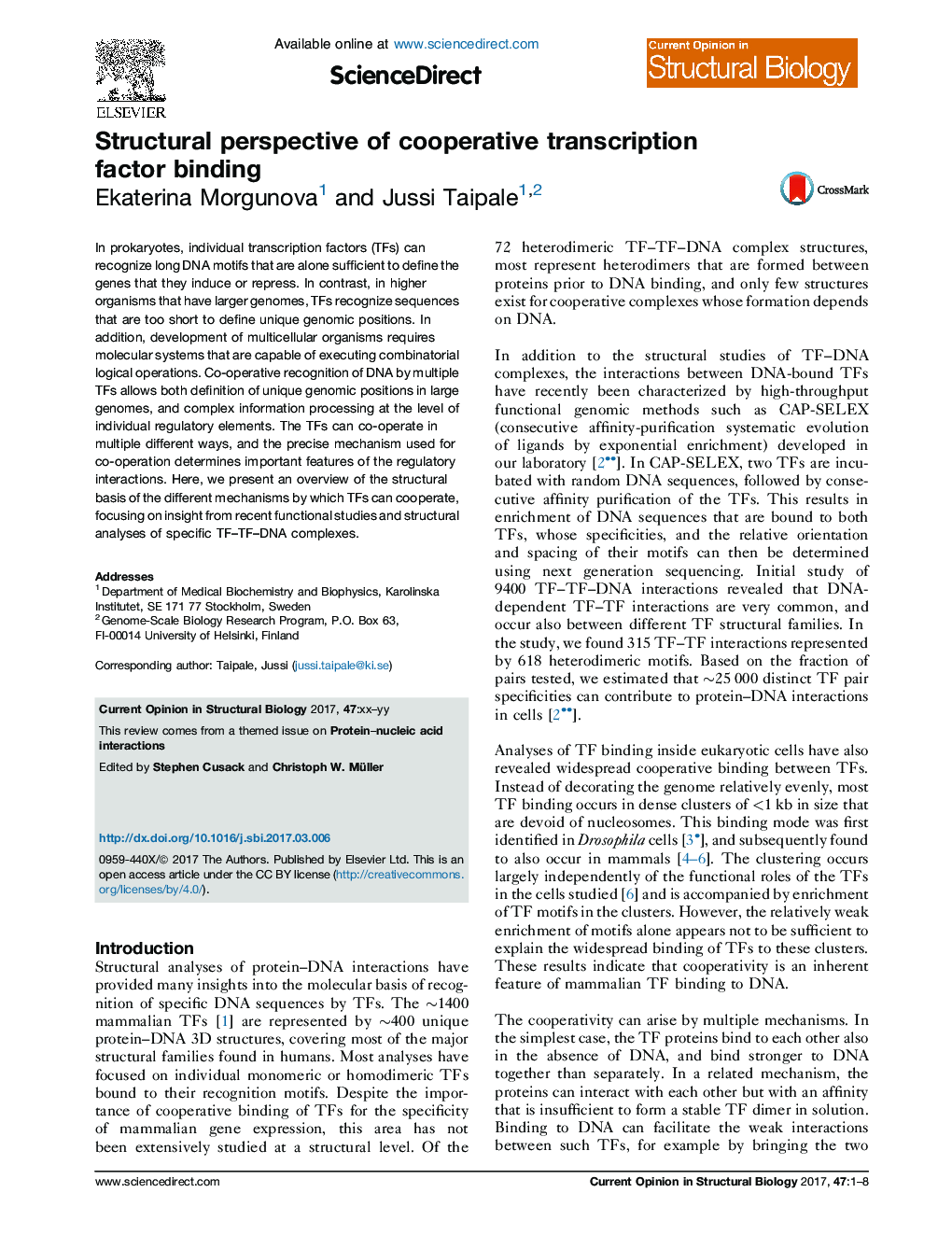| کد مقاله | کد نشریه | سال انتشار | مقاله انگلیسی | نسخه تمام متن |
|---|---|---|---|---|
| 5510751 | 1539333 | 2017 | 8 صفحه PDF | دانلود رایگان |
- Transcription factors can cooperate with each other via multiple mechanisms that have different specificities and ranges.
- Cooperativity can result from direct protein-protein contacts.
- Structural and functional studies have revealed that DNA commonly facilitates TF-TF cooperativity DNA can also mediate cooperative effects in the absence of direct contact between the TF proteins.
- Competition between TFs and nucleosomes for DNA binding leads to indirect and relatively non-specific cooperativity.
In prokaryotes, individual transcription factors (TFs) can recognize long DNA motifs that are alone sufficient to define the genes that they induce or repress. In contrast, in higher organisms that have larger genomes, TFs recognize sequences that are too short to define unique genomic positions. In addition, development of multicellular organisms requires molecular systems that are capable of executing combinatorial logical operations. Co-operative recognition of DNA by multiple TFs allows both definition of unique genomic positions in large genomes, and complex information processing at the level of individual regulatory elements. The TFs can co-operate in multiple different ways, and the precise mechanism used for co-operation determines important features of the regulatory interactions. Here, we present an overview of the structural basis of the different mechanisms by which TFs can cooperate, focusing on insight from recent functional studies and structural analyses of specific TF-TF-DNA complexes.
Journal: Current Opinion in Structural Biology - Volume 47, December 2017, Pages 1-8
